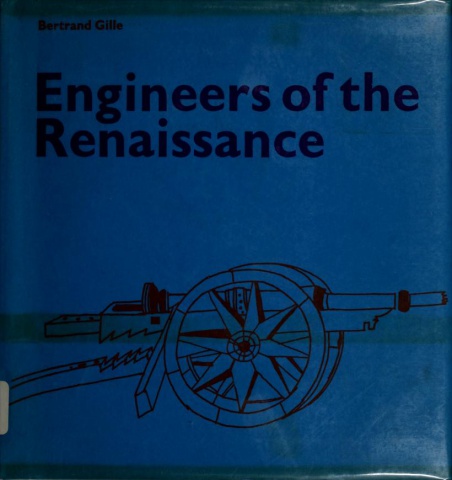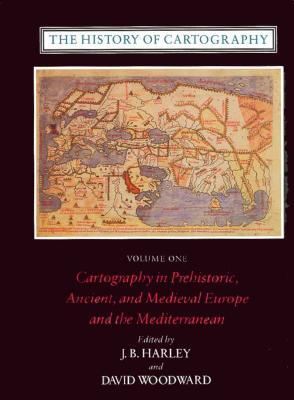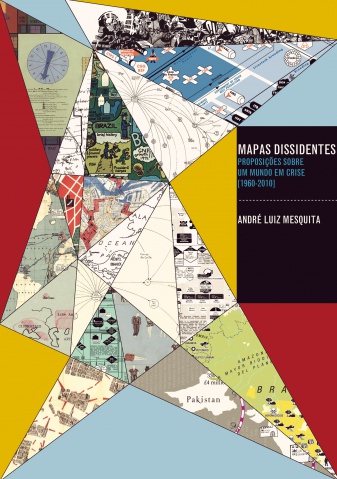Bertrand Gille: Engineers of the Renaissance (1964–) [French, English]
Filed under book | Tags: · art, art history, engineering, history of science, history of technology, machine, mechanics, renaissance, science, technology

“In his reconstruction of Renaissance technology informed by research into little-known manuscripts from libraries across Europe, Bertrand Gille emphasises the close continuity of technical invention from antiquity (in particular, the Alexandrian Greeks), through the mediaeval period (in particular, the Germans), to its brief but brilliant high flaring among the Italians of the fifteenth century. The engineers were conscious of embodying the Archimedean tradition, the tradition of “give me a place to stand and I can move the world.” It was an age marked by a close and natural mutuality between the technical and the fine arts, and by the first real union of science and technology, whose issue was a permanent enrichment of both. Science gave to engineering a new sophistication of mathematical precision, and the working models constructed for mechanical inventions prepared the way for a truly experimental science, as later developed by the generation of Galileo.
As might be expected, the figure of Leonardo da Vinci looms large in this book. It is the author’s contention, based on the documents he has uncovered, that Leonardo’s originality as an engineer has been greatly overestimated, that in fact he borrowed and adapted freely from the work of this anonymous and little-known contemporaries, that many of his ideas are already prefigured in the mediaeval period. Nevertheless, although he rests on the foothills leading up to him, he still towers above them as the consummate technical artist.”
Publisher Hermann, Paris, 1964
239 pages
English edition
Publisher MIT Press, 1966
256 pages
Reviews: Alex Keller (Technology and Culture, 1965), Harry Woolf (Science, 1968), M. Daumas (Revue d’Histoire des sciences et de leurs application, 1964, FR).
Wikipedia (FR)
Les ingénieurs de la Renaissance (French, 1964, 8 MB, added on 2018-12-27)
Engineers of the Renaissance (English, 1966, 8 MB, updated on 2018-12-27)
J. B. Harley, David Woodward (eds.): The History of Cartography (1987–)
Filed under book | Tags: · cartography, data visualisation, history, mapping

The monumental History of Cartography is an unprecedented survey of the development of cartography both as a science and an art. This essential reference presents the enormous value of maps to societies worldwide and explores the many ways they have been used to depict the earth, sky, and cosmos from ancient times to the present. The series is both a work of reference (comprehensive in coverage and rich in bibliographies, illustrations and other reader aids) and of scholarly interpretation (authoritative, factually up-to-date, revisionist and espousing deliberately broad terms of reference).
Volume 1 (1987): Cartography in Prehistoric, Ancient, and Medieval Europe and the Mediterranean.
Volume 2, Book 1 (1992): Cartography in the Traditional Islamic and South Asian Societies.
Volume 2, Book 2 (1994): Cartography in the Traditional East and Southeast Asian Societies.
Volume 2, Book 3 (1998): Cartography in the Traditional African, American, Arctic, Australian, and Pacific Societies.
Volume 3 (2007): Cartography in the European Renaissance [In two books].
Volume 4 (forthcoming, edited by Matthew Edney and Mary S. Pedley): Cartography in the European Enlightenment.
Volume 5 (forthcoming, edited by Roger Kain): Cartography in the Nineteenth Century.
Volume 6 (forthcoming, edited by Mark Monmonier): Cartography in the Twentieth Century.
Publisher University of Chicago Press, 1987-
Open Access
c5000 pages
The History of Cartography Project
Download Volumes 1-3 (PDF chapters, from the publisher)
Comment (0)André Luiz Mesquita: Mapas dissidentes: proposições sobre um mundo em crise, 1960-2010 (2013) [BR-Portuguese]
Filed under thesis | Tags: · activism, art history, cartography, data visualisation, mapping

“Esta tese é uma investigação sobre um conjunto de mapas e diagramas produzidos por artistas e ativistas entre as décadas de 1960 e 2010, a partir de diferentes contextos de transformação social, política e econômica em momentos de crise, de conflito e de formas potenciais de resistência. Através de documentos como catálogos, manifestos, artigos, fotografias, documentários, obras de arte, reproduções de mapas e entrevistas, a pesquisa realiza uma análise sobre esse conjunto de mapeamentos desenvolvidos por três gerações de artistas.
No primeiro capítulo, este trabalho examina os jogos e mapas realizados nos anos 1960 e 1970 pelo sueco-brasileiro Öyvind Fahlström (1928-1976) durante as tensões geopolíticas da Guerra Fria (1947-1991) e as mudanças estruturais e organizacionais do capitalismo global na década de 1970. No segundo capítulo, a tese discute a obra do norte-americano Mark Lombardi (1951- 2000), artista que, durante a década de 1990, procurou mapear com suas estruturas narrativas redes internacionais de poder e transações financeiras obscuras envolvendo bancos, governos e elites dominantes da sociedade neoliberal. O terceiro capítulo trata das práticas de contracartografia conduzidas entre os anos 1990 e 2010 pelos coletivos de arte ativista Bureau dÉtudes (França), Counter-Cartographies Collective (Estados Unidos) e Iconoclasistas (Argentina).
Com base nas articulações entre arte contemporânea, ativismo político e cartografia crítica, a tese considera que os mapeamentos realizados por esses artistas-ativistas trazem experiências importantes de produção de conhecimento e contribuem para a visualização das relações de poder no mundo contemporâneo, opondo-se também aos mapas supostamente imparciais, objetivos e naturalizantes do mundo guiados por interesses corporativos, militares e governamentais.”
Ph.D. thesis
Faculdade de Filosofia, Letras e Ciências Humanas, Universidade de São Paulo
284 pages
PDF (53 MB)
Comment (0)
